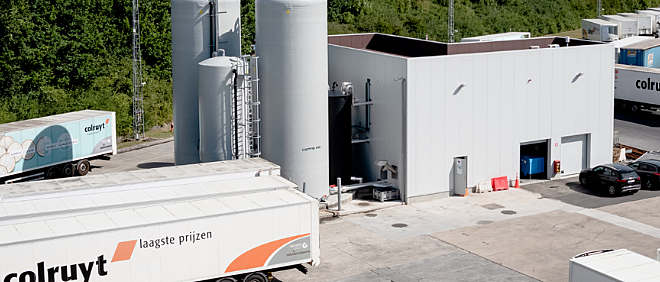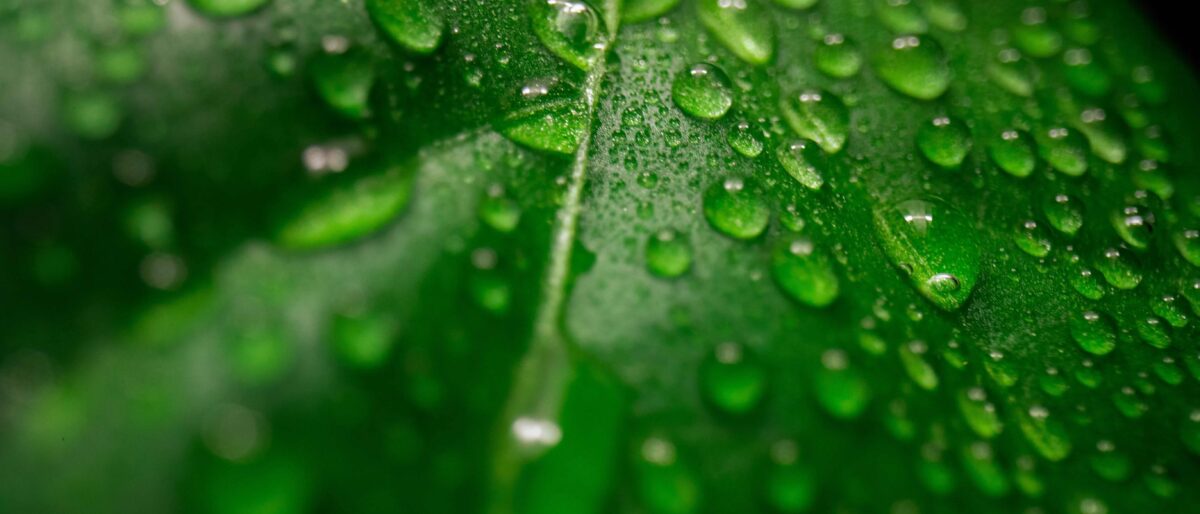FAQ: webinar how to increase water recovery with CCRO


We are thrilled to have you as part of our bio-effluent reuse community, and we would like to thank you for your engagement during the Q&A session. Your presence and active participation have made the webinar a great success.
Over 40 thoughtful and insightful questions were asked during the Q&A. Too many to handle during the live session. Therefore we have answered all of them below.
Need to increase your water recovery? In need for more information?
Questions & Answers
1. How could we make normalized data sheet for CCRO? Like RO?
Normalization is done by picking a certain time during the cycle. For example from 70 - 80% recovery and compare that with previous cycles. Other normalization procedures are same as traditional RO.
2. What is the efficiency of this system for hard water which high amount of scaling precursors?
Depends on actual hardness. CCRO has no advantages in CaCO3-scaling compared to traditional RO as the crystal forms very rapidly.
3. Can CCRO technology be retrofit to existing traditional RO installations?
Preferred way is to collect concentrate of existing RO (maybe at lower recovery) and treat the concentrate. Retrofitting is difficult, but not impossible. In most cases retrofitting is not economically viable.
4. Is the MBR and CCRO recovery performance based on upstream biological treatment performance?
Yes, when installing a water reuse plant (WRP) it is very important to have continuous stable bio effluent quality to feed the WRP. Therefore, wastewater treatment expertise both in design and operations is needed to ensure stable bio effluent. For Colruyt a good functioning of the aerobic nitrification-denitrification is essential to have compliant bio effluent quality to reuse. Also the performance of the UF to remove TSS is crucial for a good stable operation of the RO.
5. How many CCRO installations do you have?
+/- 400 for Desalitech. Waterleau was a pioneer in building CCRO installation and has today, February 2023, 9 full scale CCRO references and 2 pilot tests running with rental containers.
6. What about reject, any disposal system?
Reject will be similar as traditional RO.
7. In comparison to continuous RO, I assume you require less pre-treatment chemicals, can you quantify that reduction in chemicals required?
No, we do use same amount of pre-treatment chemicals in the feed. However, since recovery is higher the amount of chemicals spends per permeate produced is often lower.
8. What is the best formula for the antiscalant used for CCRO?
CCRO can work with multiple anti-scalant. It is the combination of the correct anti-scalant and the technology that gives the high recovery.
9. Could CCRO Technology replace the double pass RO in all cases or not & why?
It can typically on boiler feedwater where CCRO is working with seawater membranes.
10. Are there specific demands on the materials used for the installation when treating brines?
The stainless steel needs to cope with high chloride concentrations. But that is similar as traditional RO.
11. What is the highest recovery rate achieved with a CCRO unit? What was the cleaning frequency?
Depends on the application. On RO permeate we can achieve 98% with barely any cleaning. Wastewater typically has 90% or higher with cleaning every month to 3 months.
12. What is the pressure limiting the system is operating at? The feed salinity limits the pressure. Can you use it for seawater?
We prefer to remain < 41 bar, but there is an alternative CCRO that can go to higher pressures. 99% of all CCRO's are executed < 41bar, which is the focus of CCRO.
13. How much is the energy saving compared to a standard RO?
Between 10 - 20% lower than traditional RO. All depends on recovery, salt concentration and temperature off course. The energy saving lays in the difference in osmotic pressure at beginning and end of the cycle. The bigger this difference the higher the saving. See also graph attached.
14. How constant is the permeate quality as it is a plug flow, would you need a big buffer in order to have a more stable water quality?
Typically, 2 X the cycle to have it constant. But in case of multiple skids the one skid can compensate for the other.
15. How Much pressure increases or differs for CCRO at multistage centrifugal pump in comparison to normal RO??
With higher recovery (70% vs. 90%) it can easily be double the pressure. But the additional recovery should largely overcome the additional pressure.
16. What is the expected chemical use (acid, anti-scalant, biocide, etc.) with a CCRO vs a traditional RO?
No big difference, unless some saving on CIP chemicals as cleaning is less frequent.
17. Is a CCRO able to provide constant conductivity at it' outlet while there are changing conductivity at the inlet ?
No, conductivity is changing at the permeate. This is linked to the technology.
18. Any experience in a Coca Cola plant?
There are multiple references at Coca-Cola.
19. What is the khw/m3 treated as opposed to the traditional RO system?
Between 10 - 20% lower than traditional RO. All depends on recovery, salt concentration and temperature off course. The energy saving lays in the difference in osmotic pressure at beginning and end of the cycle. The bigger this difference the higher the saving. See also graph attached.
20. Is CCRO membrane specially designed or can we modify our existing RO on this?
Modifying is very difficult. Preferred way is to collect concentrate of existing RO (maybe at lower recovery) and treat the concentrate. Retrofitting is difficult, but not impossible. In most cases retrofitting is not economically viable.
21. Is there a certain type of RO membrane required for CCRO vs a non-CCRO RO system?
Any membrane from the FilmTec portfolio can be used in CCRO set-up. However there has been a dedicated portfolio of membranes launched - SOAR membranes - that are better adapted for CCRO.
22. How and by what quality parameters do you monitor and control the accepted supersaturation in ccRO when feed water qualities change without taking risk of scaling?
One needs to know the worst-case water conditions. Either you measure it (silica, phosphate, ...) or you link it to conductivity or pressure. By doing this we can avoid scaling of membrane on variable water flows.
23. Are there any TDS concentration limitations?
None other then membrane limits
24. A crucial part of CCRO, I can imagine, is a pump which can operate in a wide range of pressures. How would that influence the pump efficiencies and lifetime of the pump?
That is correct. Pumps are always equipped with a VFD to cover for the wide range.
25. What is the impact on membrane life?
A positive impact. In a like for like comparison RO vs. CCRO you will clean membranes less. This has a positive impact on membrane lifetime.
26. Through the cycle do you always return to 100% performance or does the performance decrease over time? Is a periodic CIP step still required? What is the average lifetime of these membranes?
Always to 100%, obviously membrane will decrease slightly in performance over time. CIP is no different to traditional RO, lifespan is normally longer (see other questions)
27. How much recovery % is possible ideally with CCRO?
We aim for 90% or higher, but sometimes water quality limits us.
28. How many CCRO installations exist and what is the largest installation (flow) and where?
About 400 worldwide. Biggest one is in Alabama producing 2,000 m³/h.
Biggest one for Waterleau is Madinaty a brine concentrator on an existing RO, where the CCRO produces 112 m³/h extra RO permeate from the brine.
29. What are the limitations for seawater RO? Scaling, fouling, etc?
Pressure, like with SWRO.
30. CCRO is suitable for Textile wastewater recycling?
Yes, it is as it is less susceptible to fouling.
31. Any limitation of TDS for Installation of CCRO?
None other then membrane limits
32. How much kWh/m3 of CCRO operation consume generally?
Between 10 - 20% lower then traditional RO. All depends on recovery, salt concentration and temperature off course. The energy saving lays in the difference in osmotic pressure at beginning and end of the cycle. The bigger this difference the higher the saving. See also graph attached.
33. What is the CCRO feed water quality required minimum for COD, BOD, TSS and SDI?
Similar as traditional RO
34. CR-100 can use in CCRO?
Yes, no problem.
35. Life of CCRO membranes? after how many years need to replace the CCRO membranes?
A positive impact. In a like for like comparison RO vs. CCRO you will clean membranes less. This has a positive impact on membrane lifetime.
36. What kind of dosing chemicals in CCRO?
Same as traditional RO
37. Silica scaling is impacted by other contaminants. how do you monitor that?
Indeed also aluminium, calcium, pH and temperature play a role. It is important to have knowledge of all these before designing a system.
38. How are the concentrated ions retained by the CCRO system treated to ensure discharge limits are maintained
All depends on that discharge limit, this is not different to traditional RO.
39. Please let us know what the efficiency of CCRO is if the hardness is on higher side. Also, what possible treatment shall be done to the reject as that we shall not be able to drain due to higher concentrations?
Hardness can either be corrected with pH or softening. Reject should either be discharged to sewer or evaporator. The CCRO can minimize this cost.
40. Additionally, if there is high colour in your effluent, what would be the impact on CCRO?
None
41. Thank you for the eye-opening session. I was wondering where do you discharge the concentrate?
For this case study it is to the sewer
Find your local contact
Our expertise is always within reach. Digital communication has cut long distances short, but we advocate the traditional way of sharing insights.
Contact us today. We are looking forward to help you reach your sustainable development goals.




